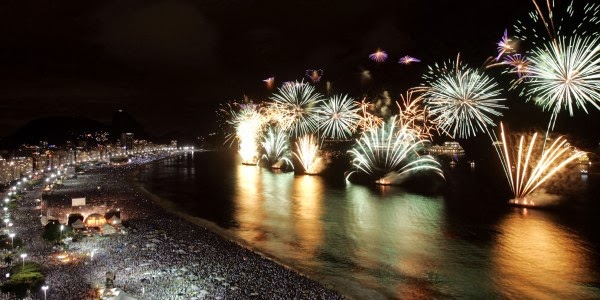Rio Carnival History
The
roots of Carnival trace back to the ancient Romans and Greeks who celebrated
the rites of spring. Across Europe, including France, Spain and Portugal,
people annually gave thanks by throwing parties, wearing masks and dancing in
the streets. Such traditions were carried over to the New World.
The Portuguese first brought the
concept of "celebration or carnival" to Rio around 1850. The practice of holding balls and
masquerade parties was imported by the city’s bourgeoisie from Paris. However,
in Brazil, the traditions soon became different. Over time, they acquired
unique elements deriving from African and Amerindian cultures.
Groups of people would parade
through the streets playing music and dancing. It was usual that during Carnival aristocrats would dress up
as commoners, men would cross-dress as women and the poor dress up as princes
and princesses - social roles and class differences were expected to be
forgotten once a year but only for the duration of the festival.
Brazilians used to riot the Carnival
until it was accepted by the government as an expression of culture. The black slaves became actively involved
in the celebrations. They were able to be free for five days. Nowadays the
slums' communities are still the most involved groups in all the carnival
preparations and they are the ones for whom Rio Carnival means the most.
By
the end of the 18 century the festivities were enriched by competitions. People
would not just dress up in costumes but also perform a parade accompanied by an
orchestra of strings, drums and other instruments. These ever more organized
competitions became the main attractions of the Carnival in Rio de Janeiro.
Until the beginning of the 20th
century, street carnival in Rio was musically a very euro centric affair -
Polkas, Waltzes, Mazurkas and 'Scottish'. Meanwhile,
the emergent working class (made up mainly of Afro Brazilians, along with some
gypsies, Russian, Jews, Poles and etc.) developed their own music and rhythm.
These people were mostly based in the central part of Rio, on a land that the
rich did not want - on the hills and swamps behind the dockyards - an area
which came to be known as 'Little Africa' now recognized as the cradle of
samba.
The parades were halted during World
War II and restarted in 1947. By
then the main competition took place downtown on Avenida Rio Branco.
Carnival has gone a long way since
it was brought to Rio, having become one of the biggest events in the World. One
of the most important recent developments was that the biggest parade the Samba
Parade moved from the streets downtown to the purpose-built Sambodromo.





Комментариев нет:
Отправить комментарий